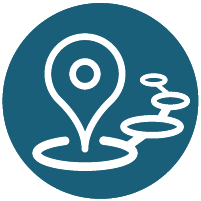Beyond Borders: The Potential that International Collaboration has to Transform Education
,
Virtual
Session description
Outline
1. Introduction & Hook (10 minutes)
Content: Karien and Georgina introduce themselves, the session topic, and share a personal anecdote about their experiences teaching in different countries, focusing on common struggles across borders.
Engagement: Start by asking the audience to reflect and share with the person sitting next to them: “Have you ever faced a call-to-change that seemed too daunting?”
Process: Use a quick poll to immediately connect with the audience, setting the tone for an interactive and reflective session.(e.g., Mentimeter or Slido).
2. Challenges and Successes in South Africa ( 20 minutes)
Content: Through an interview style conversation, Karien shares her experiences with EdTech integration in South Africa, highlighting both the successes and challenges faced in under-resourced areas. She also discusses how teacher development and training have played a crucial role.
Engagement: Georgina will ask probing, conversational questions to bring out specific, relatable examples. Encourage the audience to note similarities and differences in their own experiences, and offer a platform for live comments via chat.
Process: Interactive Q&A format between Karien and Georgina.
3. Cross-Border Learning & Global Perspectives (10 minutes)
Content: Discussion shifts to how international collaboration and diverse perspectives can be leveraged for classroom success. Karien and Georgina discuss touchpoints between South Africa and other countries’ education systems, and how sharing knowledge across borders has enriched both.
Engagement: Use a collaborative digital map tool (e.g. Nearpod or Padlet) to invite participants to place PINs on the locations they are interested in finding a partner-school to initiate a virtual teaching and learning collaboration with.
4. Q&A and Interactive Reflection (15 minutes )
Content: Open the floor for questions from the audience, encouraging participants to share their own international experiences or ask about specific strategies discussed during the session.
Engagement: Audience members can ask questions via live chat or speak directly if using a virtual platform that supports it.
Process: Peer-to-peer interaction encouraged through Q&A, with an opportunity for reflection on how the session’s content applies to their own contexts.
5. Closing & Call to Action (5 minutes)
Content: wrap up by summarizing key takeaways and encouraging educators to pursue international collaborations in their own networks.
Engagement: End with a powerful message: “No matter your resources, collaboration is key to transforming education. Provide a call to action, “reach out to an educator from one of the places that you PINNED earlier, and find a time to virtually catch-up and create opportunities for further collaboration.”
Supporting research
https://journals.sagepub.com/doi/abs/10.1177/1028315315622022,
https://journals.sagepub.com/doi/full/10.1177/2158244014536406,
https://www.taylorfrancis.com/books/edit/10.4324/9781315872339/internationalization-teacher-education-reyes-quezada,
https://podcasts.apple.com/gb/podcast/the-international-schools-network/id1667531684,
https://podcasts.apple.com/gb/podcast/the-international-schools-podcast/id1469501237
Presenters



Session specifications
Topic:
Grade level:
Audience:
Attendee devices:
Attendee device specification:
Laptop: Chromebook, Mac, PC
Tablet: Android, iOS, Windows
Participant accounts, software and other materials:
Subject area:
ISTE Standards:
Empowering Leader
- Inspire a culture of innovation, creative problem-solving, and collaboration that allows the time to explore and develop teaching practices using digital tools.
- Share lessons learned, best practices, challenges and the impact of learning with technology with other education leaders who want to learn from this work.

 Back
Back Trips and Tours
Trips and Tours Virtual Session
Virtual Session